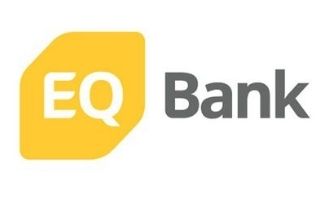 EQ Bank Joint Account
EQ Bank Joint Account
You don’t have to be a couple to open a joint bank account. Most financial institutions offer bank accounts with multiple account holders — five or more people in some cases — making it easy to manage shared expenses. You’ll each get your own debit card linked to the account, and there generally aren’t extra charges or fees for having several account holders.
In this guide, we’ll show you how to compare bank accounts that allow multiple joint account holders, and the benefits and drawbacks of a three-way (or more) joint account.
Compare bank accounts that allow multiple account holders
Finder Score for chequing accounts
To make comparing even easier we came up with the Finder Score. Welcome offers, account fees and features across 60+ chequing accounts and 25+ lenders are all weighted and scaled to produce a score out of 10. The higher the score the better the account - simple.
What is a joint bank account?
A joint bank account allows multiple account holders to deposit and withdraw money, pay bills and send transfers. Joint accounts most commonly have two account holders, but it’s possible to have more. You can open a joint bank account with three, four or five people, or even more at some banks.
There are two types of joint accounts:
- Chequing accounts, which provide easy access to your money and are designed to be used for day-to-day transactions like purchases and bill payments.
- Savings accounts, which pay interest on the money you deposit to help you reach your savings goals faster.
For chequing accounts, each account holder will have their own debit card that will allow them to make purchases and withdraw cash. Each account holder will also be able to access the account online and via a mobile banking app to transfer funds, check the account balance and monitor transactions.
By the same token, each account holder is also equally responsible for any fees that apply to the account — even if only one person is responsible for incurring them.
Why open a joint bank account with multiple account holders?
The need for more than two joint account holders most often arises in business situations, where business partners or multiple team members all need to be able to move money in and out of the account. In the case of youth accounts, it’s not uncommon to find both parents listed as account holders as well as the child. This ensures that in the event that one parent is absent, the account is still accessible.
People commonly open bank accounts in the following situations:
- Roommates paying for shared living expenses and rent
- Business partners allowing multiple employees to make deposits and withdrawals
- Family members pooling money as an emergency fund
- Friends paying for an upcoming event or vacation
- Parents monitoring their child’s account
- People acting as Power of Attorney for their elderly parents
 EQ Bank Joint Account
EQ Bank Joint Account
How do I compare bank accounts that allow multiple joint account holders?
If you want to open an account with two or more other people, consider the following when comparing your options:
- Account maintenance fees. Look for an account with low or no monthly account fees.
- Transaction limits and fees. With several people accessing the account, there may be a lot more transactions than with a single account. Make sure your account supports a sufficient number of transactions so you won’t be charged any unnecessary transaction fees.
- ATM fees. Look for an account that offers fee-free ATM withdrawals so you’re not hit with a fee each time an account holder withdraws cash. Check the size of the bank’s ATM network so you can avoid out-of-network ATM withdrawal fees.
- Interest rate. If you’re opening a joint savings account, shop around to find the highest interest rate. Check whether there are any special terms and conditions you need to meet to earn the maximum advertised rate.
- Easy account management. Make sure the account is easily accessible for all account holders via online banking and a user-friendly mobile banking app.
- Branch network. If you prefer face-to-face banking, choose a bank with convenient branch locations for all account holders.
- Number of linked debit cards. If there’s more than two people requesting a linked debit card, check whether you’ll be charged extra fees for the additional debit cards.
Pros and cons of having a joint account with multiple account holders
Pros
- Easy money management. If you share a lot of expenses with multiple people, it can be easier to manage your finances if you all have access to the one bank account.
- Fewer fees. Paying one monthly fee on a joint account is more cost-effective than if each person had to pay a fee on their own individual account.
- Transparent. Because you can all access the account online and mobile banking, it’s easy to see who’s transferring or withdrawing money and for what.
- Accessible in an emergency. With multiple account holders, your funds are accessible even if some of the account holders are unavailable.
Cons
- Less secure. Other account holders can withdraw money without your consent, so you should only ever open a joint account with people you trust.
- Difficult to manage. With multiple individuals making deposits and withdrawals into your account, you may find it difficult to keep track of the balance.
- No privacy. If you want to keep any of your transactions private, a joint account may not be right for you.
- Complicated. You’ll need to check with your bank to find out what will happen to the account if one account holder dies.
How to open a joint bank account with multiple account holders
The process for opening a joint account is basically the same as opening an individual chequing or savings account, except that each account holder will need to provide their personal information. Here’s what you need to do to open an account:
- Compare bank accounts to find one that offers the features you need and supports the right number of account holders.
- Fill out an online application form. Early in the process, you’ll be asked to specify whether you want to open an individual or joint account.
- Provide the names, contact details and personal information of each account holder.
- Provide proof of ID for each account holder, such as a driver’s licence or passport.
- Make an initial deposit and start using your account. Debit cards will be mailed out to account holders once your application has been approved.
Please note that while some banks offer a completely online sign-up process, others may require you to visit a branch to activate your account.
Bottom line
While two is the most common number when it comes to joint accounts, most banks don’t have a rule preventing you from adding multiple account holders. Compare savings accounts or chequing accounts that support multiple joint account holders to find one with the features you need.
Frequently asked questions
More guides on Finder
-
45 tips for how to save money in Canada
Your guide to saving money on gas, groceries, utilities and everyday expenses in Canada.
-
Banking statistics and trends in Canada for 2025
Explore key banking statistics and figures from the Finder: Consumer Sentiment Survey January 2025.
-
The best banks in Canada for 2025
We compare Canada’s best banks to help you find your perfect banking match.
-
Scotiabank promotions and offers
Explore all the latest Scotiabank promotions and offers available now.
-
Beacon Money Account review
Your guide to features and fees of the Beacon Money Account for newcomers to Canada.
-
Alternatives to Tangerine Bank
Your guide to the 6 of the best Tangerine alternatives in Canada.
-
14 best new bank account offers for April 2025
Earn cash, rewards points, bonus interest rates and more with these new bank account offers and promotions.
-
Bank of Canada interest rate forecast report
Read Finder’s BoC Interest Rate Report for forecasts from some of Canada’s brightest minds in economics and learn more about how recent rate increases could affect Canada’s real estate market.
-
Compare bank interest rates
From mortgages to high-interest savings accounts, here’s how to find the best interest rates in Canada.
-
Open a bank account online in Canada in 5 easy steps
Compare and open a bank account online in Canada in as little as 5 minutes. Learn what you need to apply and how to get started today.
